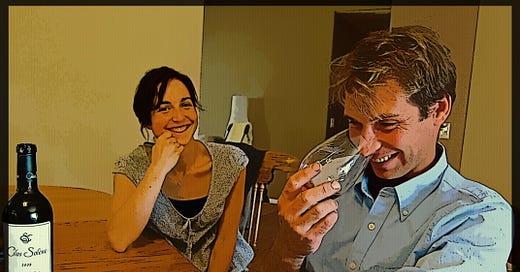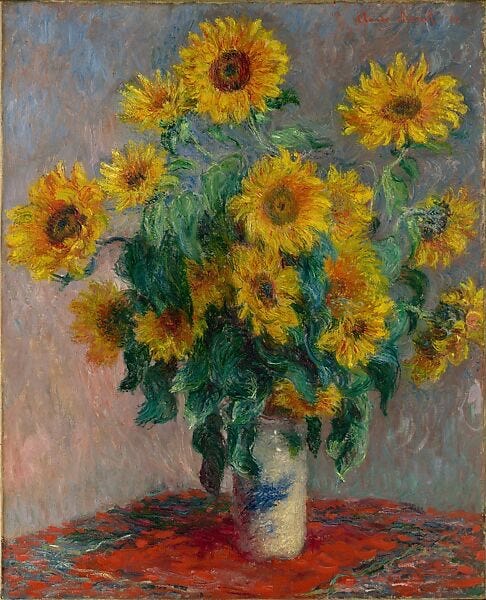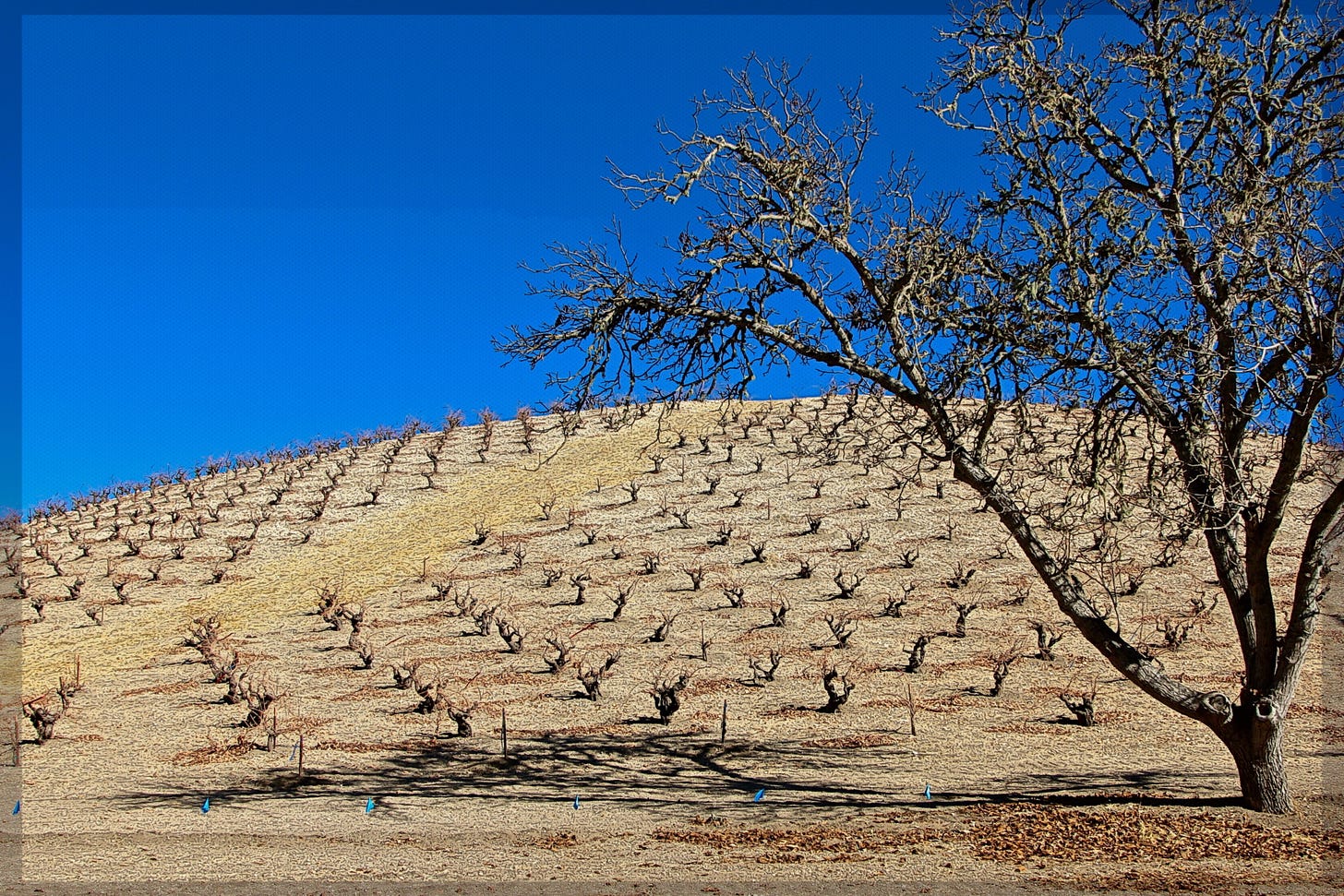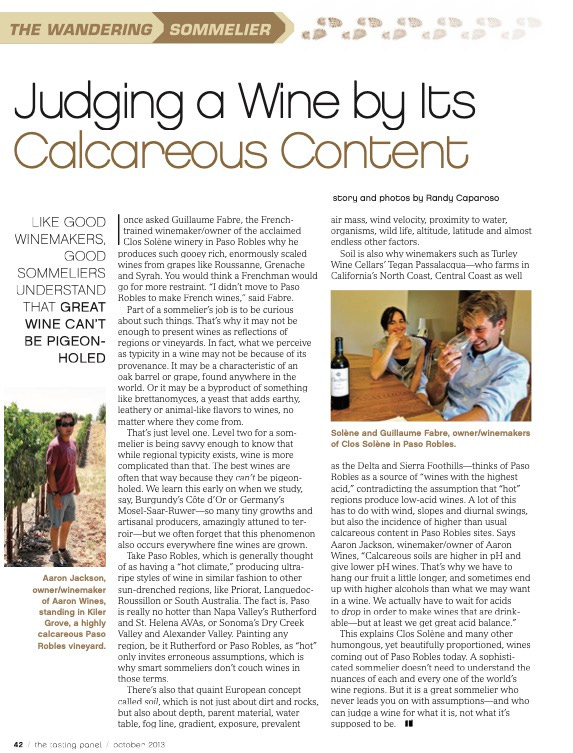Judging a wine by its calcareous content, not its cover
From the annals of The Wandering Sommelier
For a span of ten years (2012-2022) I penned hospitality industry columns under the banner of “The Wandering Sommelier,” for Tasting Panel Magazine. The following is the original text of a piece published in October 2013, cautioning against judging wines by their cover, which can be erroneous.
I once asked Guillaume Fabre, the French schooled winemaker/owner of the acclaimed Clos Solène winery in Paso Robles, why he produces such gooey rich, enormously scaled wines from grapes such as Roussanne, Grenache and Syrah. You would think a Frenchman would go for more restraint. “I didn’t move to Paso Robles to make French wines,” said Monsieur Fabre. “If I wanted to, I would have stayed in France.”
Part of a sommelier’s job is to be curious about such things. We have to be like 4-year-olds, always asking why. That is why it may not be enough to present wines as reflections of regions or vineyards. In fact, what we perceive as typicité in a wine may not be because of its provenance. It may be a characteristic of an oak barrel, or a grape, which you can find anywhere in the world. It may be a byproduct of something like Brettanomyces, a yeast that adds earthy, leathery or animal-like flavors to wines, no matter where they come from. Or it may be all about branding—resorting to standard industry winemaking manipulations (or the opposite, low intervention “natural” methods) to meet market expectations.
That’s just level one. Level two for a sommelier is being savvy enough to know that while regional typicity exists, wine is more complicated than that. The best wines are often that way because they can’t be pigeon-holed. We learn this early on when we study, say, Burgundy’s Côte d’Or or Germany’s Mosel-Saar-Ruwer—so many tiny growths and artisanal producers, each plugging away in their own fashion—but we often forget that this phenomenon exists wherever fine wines are grown.
That is to say, you could ask both Monet and Manet to paint the exact same vase and flowers. The chances that their paintings would come out looking the same are practically nil, yet both would be wonderful. Why in the world would you expect talented winemakers to render great vineyards in exact same ways?
Take Paso Robles, where Monsieur Fabre toils away. This a region generally thought of as having a “hot climate,” producing ultra-ripe styles of wine in similar fashion to other sun drenched regions, such as Priorat, Languedoc-Roussillon, or South Australia. Yeah, Paso Robles is “hot,” but the fact is, it really is no hotter than Napa Valley’s Rutherford and St. Helena AVAs, or Sonoma’s Dry Creek Valley and Alexander Valley. Painting any region, be it Priorat or Paso Robles, as “hot” only invites erroneous assumptions. Assumption such as: Only fat, ultra-ripe, low acid wines can come from hot climates. Smart sommeliers don’t couch wines in those terms because they know that provenance, in fact, is often duplicitous. It’s not the whole story.
Remember your studies of Côte d’Or and Mosel-Saar-Ruwer? These regions are also associated with that quaint European concept called terroir, which is not just about soil and climate, but also about depth of soil and content of parent material, water table, fog line, gradient, exposure, prevalent air mass, wind velocity, proximity to water, organisms, surrounding flora and fauna, altitude, latitude, and almost endless other factors.
Soil, in fact, is also why winemakers such as Turley Wine Cellars’ Tegan Passalacqua— who farms throughout California’s North Coast, Central Coast, as well as in Lodi and the Sierra Foothills—thinks of Paso Robles as a source of “wines with the highest acid,” contradicting the assumption that “hot” regions produce low acid wines. A lot of this has to do with wind, slopes and ridiculously wide diurnal temperature swings, but also the incidence of higher than usual calcareous content in Paso Robles sites.
Says Aaron Jackson, winemaker/owner of Paso Robles’ Aaron Wines, “Calcareous soils are higher in pH and give lower pH wines. That’s why we have to hang our fruit a little longer, and sometimes end up with higher alcohols than what we may want in a wine. We actually have to wait for acids to drop in order to make wines that are drinkable. Wines can get big, but at least we get great acid balance.”
This explains why Clos Solène and many other humongous yet beautifully balanced wines are coming out of this region today. While Monsieur Fabre did not move to Paso Robles to produce French wine, he knew he could produce wines just as fine and proportionate as any in, say, France, yet true to their own provenance or terroir.
In any case, a sophisticated sommelier does not need to understand the nuances of each and every one of the world’s wine regions, such as the fact that Paso Robles is replete with calcareous soils, or has the widest range of diurnal temperature swings in California. Maybe you don’t know that. But if you leave yourself open to every wine, the sensory qualities related to these special attributes often reveal themselves in the glass. Tasting is believing.
If, on the other hand, you meet someone who claims to know every region’s wines before actually tasting them, you’ve probably met a liar. There are far too many of them in our business. Being smart about wine doesn’t make you smart in the head.
Whenever you taste wines with preconceptions, you risk misleading guests with half-assed assumptions; either that, or depriving them of some great experiences. Don’t be that sommelier. Whatever you do, never judge a wine by what it is supposed to be. Judge it for what it is.







